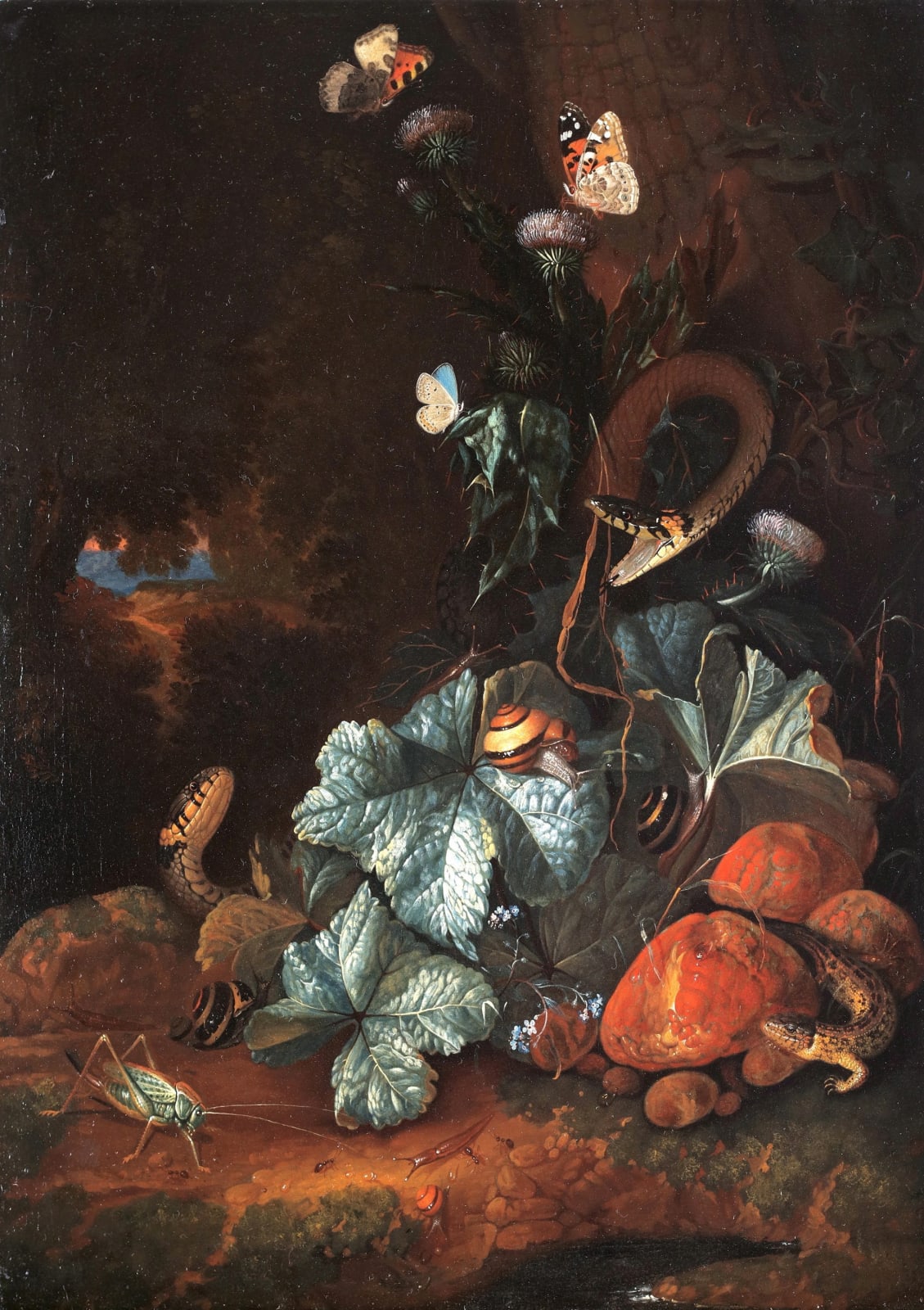Carl Wilhelm de Hamilton (Brussels 1668 - 1754 Augsburg)
Carl Wilhelm de Hamilton was the son and pupil of the Scottish artist James de Hamilton (circa 1640 – 1720) in Brussels. (When still a boy of approximately ten years old James’ family had fled from Scotland to escape Cromwell’s persecution.) There are no securely attributed paintings known by James de Hamilton, who reportedly was a painter of flowers and fruit. Carl Wilhelm’s brothers, Philipp Ferdinand and Johann Georg, also studied painting with their father. Carl Wilhelm was probably court painter in Baden-Baden between 1699 and 1707. Subsequently he worked for Prince-Bishop Alexander Sigismund von Pfalz-Neuburg in Augsburg. De Hamilton remained there even after the Prince-Bishop’s death in 1737.
Carl Wilhelm specialized in forest floors with lizards and butterflies, hence his surname “Thistle Hamilton”. The genre of the ‘sottobosco’ or ‘undergrowth’ however did not originate with de Hamilton, although he remains one of the best known exponents of the genre. Around 1650, the empirical investigation into the behaviour and physiology of butterflies, snakes, toads, lizards, chameleons, hedgehogs, etc. began on a pan-European scale. Animals were either collected and housed in jars, observed in their native environment or in specially designed and enclosed habitats.
During the second half of the 17th century the Dutch painter Otto Marseus van Schrieck (Nijmegen 1619/20 – 1678 Amsterdam) invented a new genre: so-called “Nature Pieces” (“bosgrondjes” in dutch): a small and bizarre microcosm set against an often Italianate landscape background. These forest floors represent a mysterious dark close-up of the shadowy undergrowth of forest floors, giving detailed views of wild flowers, weeds, thistles and mushrooms, animated by butterflies, strange insects, reptiles, toads, frogs and lizards. Many painters, such as de Hamilton, followed his example.
Forest floors such as the present work of course are no stranger to Vanitas symbolism: the butterflies stand for the spirit (sometimes also for recklessness), while the snakes, toads, frogs and lizards refer to the transient nature of life.
Provenance
Private collection, France.
